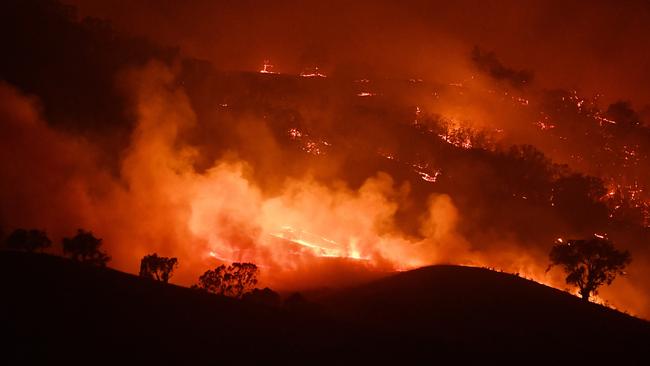Eyes in the sky help douse fires before they spread

The final report of the 2020 NSW Bushfire Inquiry called for technology to come to the fore to “detect ignitions and monitor accurately all fire edge intensity and progression”. It recommended the inclusion of “remote sensing systems that can sense precisely and rapidly through heavy smoke, cloud, fog and dust”.
Physicist Greg Clark, former chief operating officer and president of one of the largest satellite manufacturers and operators, is confident we could use satellites to detect fires in their early stages. The technology is available and could be carried out on satellites at a height of 600km to 1000km.
For years scientists have been developing accurate thermal infra-red sensors that can detect fires small enough to be suppressed easily. These can be deployed in satellites to map vast areas prone to fires. GPS technology can pinpoint the relevant locations to within a small area.
Clark says about 10 satellites would be needed, orbiting every two to four hours, mapping the hot spots. The sensors in the system would detect long-wavelength bands of light (beyond the range of human vision) emitted from Earth, the intensity of which depends on surface temperatures.
Geologists have used thermal infra-red spectrometry for decades in mineral exploration, although its application would be different for fire detection. The accuracy could be such that it might take just one Skycrane helicopter or fixed-wing aircraft to firebomb the incipient blaze at the very start. And that would be it.
Despite the widespread acceptance of the report’s recommendation and the availability of relevant technology, governments appear to have no coherent strategy. One wonders whether this year’s likelihood of a benign fire season (given the amount of rainfall recently) has bred complacency. Although useful work is being done at the Australian National University, CSIRO and other bodies, there is no firm plan; certainly nothing governmental.
Among others, the Minderoo Foundation, funded by mining entrepreneur Andrew Forrest, is involved in the quest for an early warning system. Minderoo chief executive for fire and flood resilience Adrian Turner says, “We are very focused on space-based Earth observation.”
Governments and their rural fire services may feel challenged by the cost. The estimated $475m price tag would be a modest investment when weighed against the lives and property saved, not to mention the wildlife.
The capital could be raised by issuing green bonds, which are used to finance environmentally helpful projects. This form of financing is gaining in acceptance among investors and corporations who see it as a responsibility under their social licence.
Investment banker Mark Burrows, a pioneer in the establishment of commercial green bonds and a senior adviser to the UN Environment Program, says the setting up of an early warning system based on satellites would be a natural for this form of fundraising. He believes it is readily financeable on the international markets by way of long-term, low-cost green bonds at an interest rate significantly lower than other forms of finance, around 1.5 per cent, fixed, for six to 10 years.
As the financing is achievable, it’s time the relevant authorities stepped up to create an early warning system in bushfire-prone Australia that truly works.
Tony Grey founded Pancontinental and has worked on mining ventures in Australia and overseas.


Australia must, and can, find better ways to combat bushfires that include ways to detect them in their early stages before they take hold. Australia needs an early warning system. Firefighters have had to rely on public-spirited individuals phoning in when they see a fire, but often by this stage the blaze is well under way.